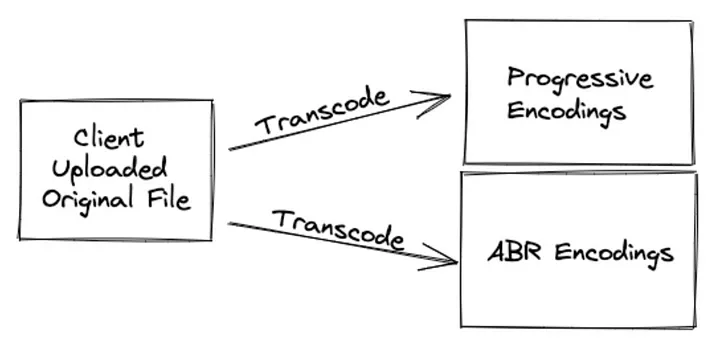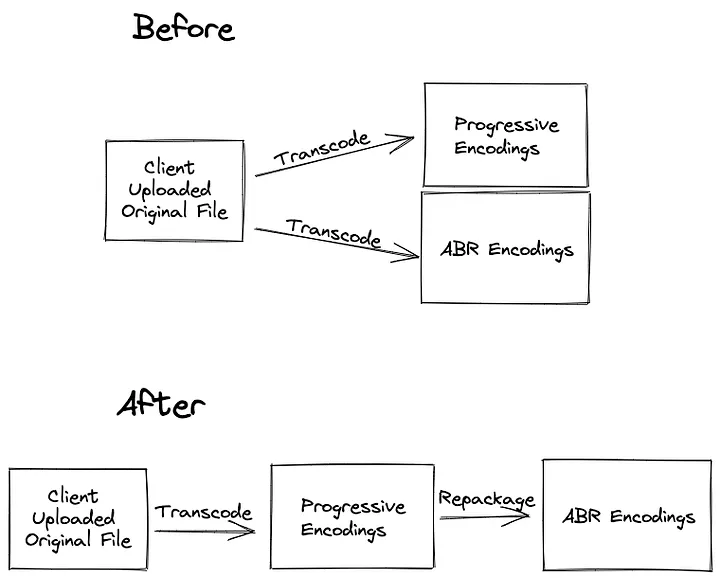If you’re an Instagram user, you know that the platform has a massive video inventory. Whether it’s Stories, IGTV, or posts, video content has become a crucial part of the Instagram experience.
But have you ever stopped to wonder how Instagram manages to store and handle all those videos? That’s where Instagram’s IT architecture comes in.
Essentially, Instagram’s IT architecture is the framework that enables the platform to store, process, and deliver billions of videos to users worldwide. It’s what makes the Instagram video feature possible and allows users to upload, share, and view videos seamlessly.
Given the importance of video content in Instagram’s user experience, it’s no surprise that the platform has invested significant resources in developing a robust IT architecture for video storage. And in this blog, we’ll take a closer look at how Instagram does it. But first, let’s take a quick look at the history of Instagram’s video feature.

How Instagram’s IT architecture Works
Instagram is one of the most popular social media platforms today, boasting over a billion active users. One of the key features of Instagram is its video sharing service, which enables users to upload and share short videos with their followers. With the sheer volume of videos being uploaded every single day, it begs the question – how does Instagram store all of these videos and ensure they’re accessible to users worldwide? In this blog, we’re going to take a closer look at Instagram’s IT architecture specifically for video storage and explore how it works.
Instagram’s IT Architecture Overall architecture of Instagram’s video storage
At a high level, Instagram’s video storage is powered by a distributed architecture with multiple data centers around the world. This ensures that videos are stored closer to the users who are going to be accessing them. Instagram’s video storage system is built on top of Amazon Web Services (AWS), which the company leverages for its cloud computing needs. The use of AWS allows Instagram to easily scale up or down based on demand.

Hardware and software components used in the architecture
Instagram’s video storage system is powered by a combination of hardware and software components. At the hardware level, the company uses high-end servers and storage devices to store videos. On the software side, Instagram has developed its own custom software for managing and storing videos. This includes a proprietary video compression algorithm that helps minimize the storage space required for each video.
Role of cloud computing and data centers
As noted earlier, Instagram relies on AWS for its cloud computing needs. This allows the company to leverage the benefits of cloud computing, including scalability and flexibility. Additionally, Instagram has multiple data centers around the world to ensure that videos are stored closer to users for faster access. This also helps to reduce latency and ensure a smooth user experience.
How Instagram ensures data security and privacy
Given the amount of personal data that Instagram collects from its users, it’s important that the company takes data security and privacy seriously. Instagram uses a variety of measures to ensure that user data is kept secure and private. This includes encryption of user data both at rest and in transit, as well as strict access controls to prevent unauthorized access to user data. Additionally, Instagram maintains a team of experts in data security and privacy to continually monitor and improve its security posture.
Overall, Instagram’s IT architecture for video storage is a highly sophisticated and distributed system that is built to scale with demand. By leveraging cloud computing and a distributed architecture, Instagram is able to store and access videos quickly and efficiently. With a strong emphasis on data security and privacy, users can be assured that their personal data is being protected.

Storage and compression technology
When it comes to storing billions of videos, Instagram needs to be very smart about it. That’s where their video compression technology comes in, allowing them to fit more videos in less storage space without compromising the quality of the video.
Instagram uses codecs, or coding/decoding algorithms, to compress videos. These codecs remove unnecessary information from the video, reducing its size without significantly affecting its quality. Instagram employs different codecs, depending on the type of video and device used to record it.
But Instagram doesn’t stop there. They also use machine learning to further optimize video compression. Machine learning algorithms analyze every frame in the video, identify redundancies, and remove or reduce them. This helps them maintain the quality of the video while saving even more storage space.
To strike the balance between video quality and storage space, Instagram uses a few different strategies. For example, they apply higher compression rates to videos that are not viewed frequently, allowing more space for popular videos. They also directly convert uploaded videos to a standardized format, reducing the load on their system and streamlining storage.
Overall, Instagram’s storage and compression technology are incredibly impressive and crucial to their user experience. Without these innovative solutions, their platform would not be able to handle the sheer volume of videos they receive each day.
Scaling and optimization
Instagram’s popularity has soared with over one billion active users, and billions of videos uploaded. But how does the company handle this massive influx of data? The answer lies in their scaling and optimization techniques.
To handle the billions of uploads, Instagram relies on a distributed storage architecture that leverages Content Delivery Networks (CDNs). By caching content and replicating data on the edge of the network, CDNs provide faster access to data and improve global accessibility. Instagram uses multiple CDNs to cover different regions and ensure that users can access videos quickly.
To ensure faster video streaming, Instagram uses various optimization techniques that balance video quality and storage space. Instagram compresses videos using codecs and machine learning algorithms to reduce their size while maintaining quality. The platform dynamically optimizes video streaming based on network conditions and device capabilities. During peak loads, Instagram handles traffic spikes by using load balancers and auto-scaling clusters.
Mobile app integration
Instagram’s mobile app integration is designed to provide a seamless user experience for video content. The platform integrates video storage and playback within the app, allowing users to view videos without leaving the platform. Instagram also considers user experience design in video content to ensure smooth playback on mobile devices.
How Instagram’s IT architecture plays a critical role in its business model. Video content is essential to its platform, and billions of videos play an instrumental role in engaging users and retaining them. However, hosting and managing billions of videos pose significant challenges to the platform. Nevertheless, Instagram’s IT architecture enhances user engagement, influences user retention, and more importantly, creates potential for monetizing video content on the platform.
Instagram’s IT architecture for video storage has resulted in a vast and robust platform that provides billions of videos to millions of users worldwide. The scale and complexity of the system represent a significant achievement in software engineering and IT infrastructure. Going forward, companies in social media should learn from Instagram’s structure and leverage distributed systems, cloud technologies, and machine learning to create a rich and engaging user experience.
Mobile app integration
Let’s talk about how Instagram integrates its video storage and playback with its mobile app. As we know, Instagram is primarily a mobile app, and video content plays a key role in engaging millions of users worldwide.
Instagram’s mobile app seamlessly integrates video storage and playback, ensuring a smooth user experience. To achieve this, the app takes into account various user experience design considerations, such as providing prominent placement of videos on the user’s feed, and optimizing the app’s interface for mobile devices.
The app also ensures smooth video playback on mobile devices by using advanced caching and network optimization techniques. Additionally, Instagram is currently exploring new ways of integrating video content within the app, including vertical video formats and interactive features that enhance user engagement.
As the popularity of mobile video continues to grow, Instagram is committed to delivering an exceptional video experience, enabling users to create and share content quickly and easily. With ongoing investments in its IT architecture, Instagram is well-positioned to maintain its position as a leader in mobile video content.
Business impact
Believe it or not, Instagram’s video feature has a huge impact on their business model. In fact, video content has become essential to keep users engaged and is a driving force behind user retention. Since the feature’s launch in 2013, Instagram’s video inventory has expanded significantly, with more and more users posting and watching videos every day.
While hosting billions of videos may seem like a daunting task, Instagram’s IT architecture has allowed them to efficiently store and manage these files. However, while there are benefits to hosting large quantities of video, there are also many challenges that come with it. For instance, ensuring that users can access these videos quickly, no matter where they are in the world, is vital to providing a positive user experience.
Overall, Instagram’s IT architecture has had a significant impact on the success of their video feature. By effectively managing these videos and ensuring their accessibility to users, Instagram has seen higher rates of engagement and retention for their app. Additionally, by providing businesses with various advertising and monetization opportunities, Instagram has the potential to generate significant revenue from video content in the future.
As we wrap up our discussion on Instagram’s IT architecture for video storage, let’s review the key takeaways. Instagram uses a highly optimized and scalable architecture for storing billions of user-uploaded videos. The architecture includes various hardware and software components, as well as cloud computing and data centers.
Instagram also leverages advanced compression techniques, utilizing codecs and machine learning, to balance video quality with storage space. The platform handles peak loads during popular events and ensures smooth video playback on mobile devices by integrating storage and playback with the Instagram mobile app.
The impact of this architecture on Instagram as a platform is significant, as video content is a critical part of their business model. The ability to host and optimize billions of videos drives user engagement and retention.
Looking towards the future, we can anticipate social media apps continuing to invest heavily in video storage and playback infrastructure. As users demand higher-quality video, platforms will need to innovate further and evolve their IT architectures.
Read More : Interactive Fleet Learning: Revamping Driver Training for the Modern Age
Follow us on Instagram : Click Here





